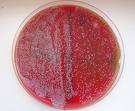Newcastle: UK scientists have found a way of making living tissue from the cells of dead embryos.
The experiment was carried out at Newcastle University’s Centre for Stem Cell Biology last year and may hold the solution to the ethical dilemma of using embryos created soley stem cell extraction. The embryos used in the experiment died naturally during IVF procedures.
The technique increases the possibility that stem cells can soon be used for the treatment of debilitating diseases such as Alzheimer’s and Parkinson’s.
Professor Miodrag Stojkovic, the researcher who carried out the experiments said: “This should get round opposition to stem cell science because live embryos will no longer need to be used in all experiments.”
Stem cells extracted from embryos are prized by scientists because they are capable of turning into any cell or tissue type in the body. Ultimately they could be used as treatments for heart disease and diabetes and other diseases, researchers argue.
But the technology involves creating and destroying living embryos to extract stem cells. Usually these embryos are made at fertility clinics when couples go for in vitro fertilisation (IVF).
However, Stojkovic’s work suggests it may be possible to avoid using live embryos; instead, scientists use those that have died naturally during IVF. It would also mean that many more embryos were available for research and eventual treatment of the diseases, speeding up advancements in the cutting-edge science.
Stojkovic’s experiments were carried out while he was working at the Centre for Stem Cell Biology at Newcastle last year. In a paper, published last week online on the website of the journal Stem Cells, Stojkovic reveals he and his colleagues took 13 embryos, created by IVF. All 13 had stopped developing a few days after conception. ‘They were in a very early stage of development,’ said Stojkovic, now head of Sintocell, the Serbian medical research centre.
The team then waited 24 hours to check that the embryos were no longer dividing before beginning their experiments. ‘These were all deemed to be arrested embryos,’ said Stojkovic. ‘In other words, they were dead. [But] they had the capacity to develop any different type of cell you could think of, including kidney cells, liver cells, and skin cells.’
‘I think this is a very important development, although stem cells created this way should not be seen as an alternative to those made from live embryos. They should be seen as an additional source.’
Last night right-to-life campaigners called for caution. ‘In theory if an embryo is obtained ethically and a stem cell can be derived after that embryo has died naturally, then that will remove all ethical objections as there is no destruction of a living organism,’ said Josephine Quintavalle, of Comment on Reproductive Ethics, a Catholic campaign group. ‘We do not have objections to the use of donated tissue and organs in other areas of medicine.’
But Quintavalle warned that the case for the use of dead embryo cells had not been proved. ‘There is the critical question of how you know when an embryo is dead or not.’
George Daley, of the Harvard Stem Cell Institute, said the paper’s approach raised scientific concerns. ‘If there was something wrong with the embryo that made it arrest, isn’t there something wrong with these cells? We don’t know.’
However, Stojkovic’s work was given strong backing by Donald Landry, at the Columbia University Medical Center in New York, who called the work an important addition to the field. ‘Regardless of how you feel about personhood for embryos, if the embryo is dead, then the issue of personhood is resolved,’ Landry said.
‘This then reduces the ethics of human embryonic stem cell generation to the ethics of, say, organ donation. So now you’re really saying, “Can we take live cells from dead embryos the way we take live organs from dead patients?”‘
What they do
· Embryonic stem cells have the ability to develop into any type of cell in the human body, from brain cells to skin and kidney cells.
· By creating cloned embryos of patients, it might one day be possible to grow their stem cells in the laboratory, say scientists. These could use then be used as transplants.
· Diseases such as diabetes, Alzheimer’s and Parkinson’s – in which particular organs or pieces of tissue have been destroyed – are thought to be the best candidates for treatments

